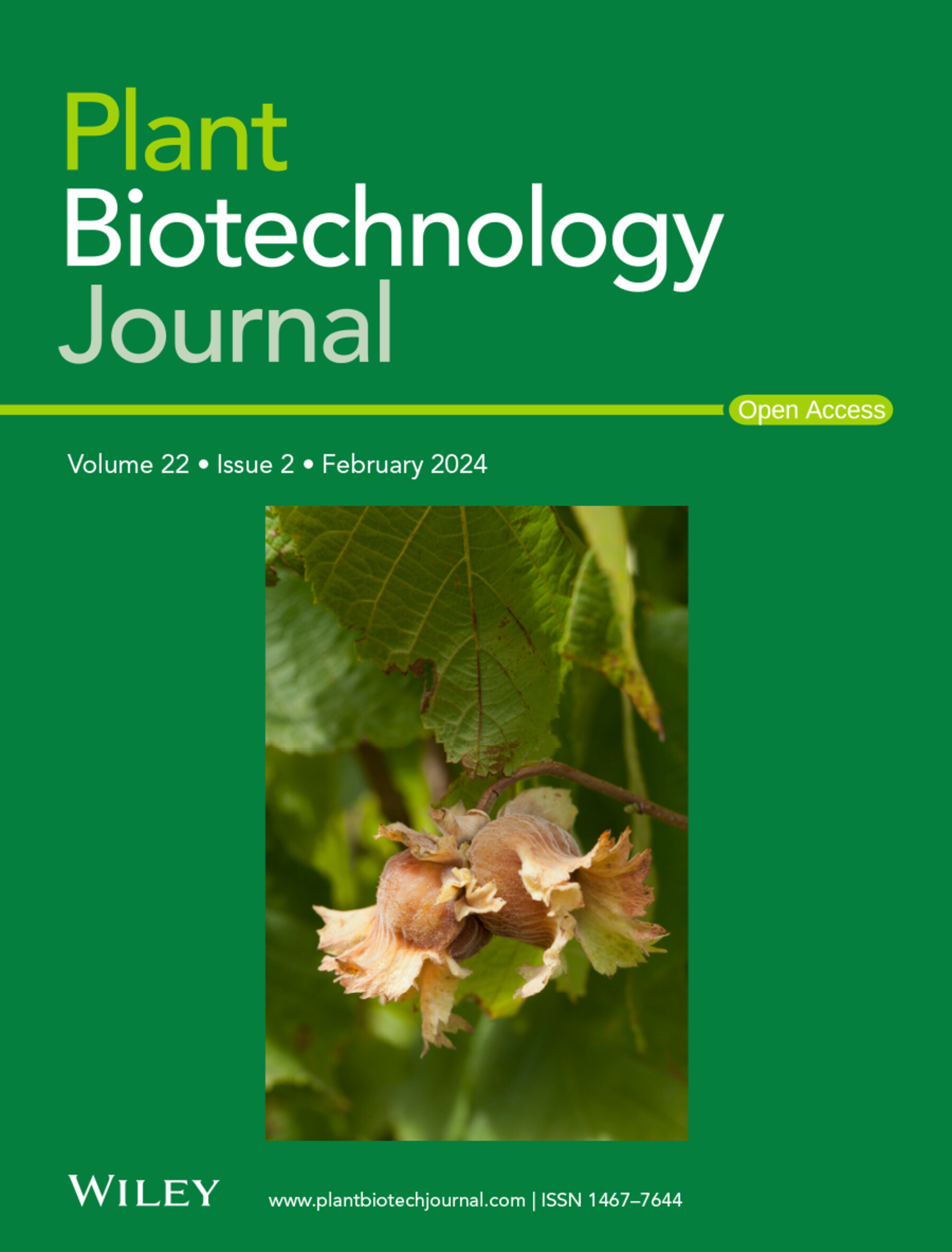VvERF045 Integrates Ethylene, Brassinosteroid and Abscisic Acid Pathways to Orchestrate Anthocyanin Biosynthesis in Grapevine.
IF 10.5
1区 生物学
Q1 BIOTECHNOLOGY & APPLIED MICROBIOLOGY
引用次数: 0
Abstract
Anthocyanin biosynthesis in non-climacteric grape berries is regulated through coordinated phytohormonal signalling networks. However, the precise mechanisms by which abscisic acid (ABA), brassinosteroids (BRs) and ethylene (ET) synergistically modulate this process remain unclear. In this study, we identified the ET-responsive transcription factor VvERF045 as a critical integrator mediating the crosstalk among ET, BR and ABA pathways, thereby regulating anthocyanin biosynthesis. Mechanistically, VvERF045 physically interacts with its R2R3-MYB partner, VvMYB62, to co-activate the structural genes (SGs) involved in anthocyanin, BR and ABA biosynthesis pathways, including VvUFGT, VvDFR, VvDWF4, VvCPD, VvZEP/ABA1, thus collaboratively redirecting metabolic resources toward the production of anthocyanin, BR and ABA, respectively. Notably, ET significantly enhances the activity of VvERF045, suggesting a potential regulatory hierarchy wherein both BR-dependent and ABA-dependent berry pigmentation may be contingent on upstream ET perception. Collectively, our findings provide insights into how non-climacteric grape fruits temporally coordinate phytohormone pathways for colouration, revealing VvERF045 as a central regulator that bridges ET sensing to BR-mediated and ABA-mediated anthocyanin accumulation.整合乙烯、油菜素内酯和脱落酸途径的VvERF045调控葡萄花青素的生物合成。
非更年期葡萄果实花青素的生物合成是通过协调的植物激素信号网络进行调节的。然而,脱落酸(ABA)、油菜素内酯(BRs)和乙烯(ET)协同调节这一过程的确切机制尚不清楚。在这项研究中,我们发现ET应答转录因子VvERF045是介导ET、BR和ABA通路间串音的关键整合子,从而调节花青素的生物合成。机制上,VvERF045与其R2R3-MYB伙伴VvMYB62物理相互作用,共同激活参与花青素、BR和ABA生物合成途径的结构基因(SGs),包括VvUFGT、VvDFR、VvDWF4、VvCPD、VvZEP/ABA1,从而协同将代谢资源分别转向花青素、BR和ABA的生产。值得注意的是,ET显著增强了VvERF045的活性,表明br依赖性和aba依赖性的浆果色素沉着可能取决于上游ET感知。总的来说,我们的研究结果提供了非更年期葡萄果实如何在时间上协调植物激素着色途径的见解,揭示了VvERF045作为一个中心调节剂,将ET感知与br介导和aba介导的花青素积累联系起来。
本文章由计算机程序翻译,如有差异,请以英文原文为准。
求助全文
约1分钟内获得全文
求助全文
来源期刊

Plant Biotechnology Journal
生物-生物工程与应用微生物
CiteScore
20.50
自引率
2.90%
发文量
201
审稿时长
1 months
期刊介绍:
Plant Biotechnology Journal aspires to publish original research and insightful reviews of high impact, authored by prominent researchers in applied plant science. The journal places a special emphasis on molecular plant sciences and their practical applications through plant biotechnology. Our goal is to establish a platform for showcasing significant advances in the field, encompassing curiosity-driven studies with potential applications, strategic research in plant biotechnology, scientific analysis of crucial issues for the beneficial utilization of plant sciences, and assessments of the performance of plant biotechnology products in practical applications.
 求助内容:
求助内容: 应助结果提醒方式:
应助结果提醒方式:


